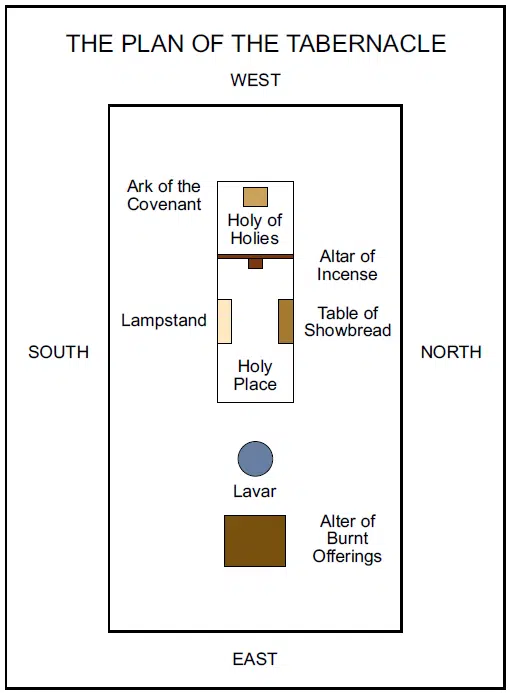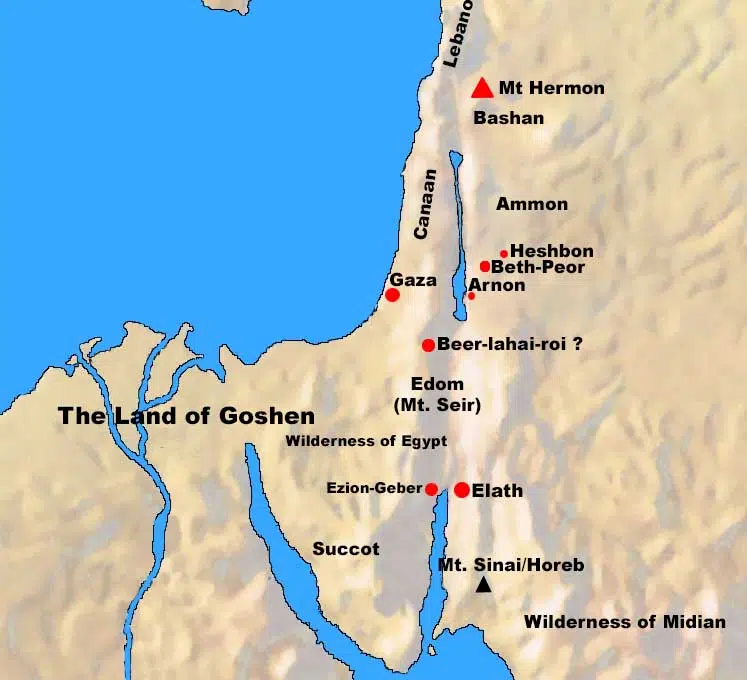Moses recounted the amount of material that was used to build the tabernacle. The emphasis here is on the amount of precious metals used to make the items for the tabernacle and in the tabernacle.
Now that the tabernacle and courtyard were built, Moses lists the leaders as well as an inventory of the materials used in the construction. Moses introduced this section by stating that this is the number of the things for the tabernacle, which he also called the tabernacle of the testimony. These items were numbered according to the command of Moses, and it was for the service of the Levites, by the hand of Ithamar the son of Aaron the priest. Ithamar was the youngest son of Aaron. The Levites were the ones assigned by the LORD to maintain the tabernacle and its surroundings (Numbers 1:50 – 53).
Moses restated here that, in obedience to the LORD, Bezalel the son of Uri, the son of Hur, of the tribe of Judah, made all that the Lord had commanded Moses. Bezalel was called to be a chief artisan in Exodus 31:2 – 3, where he was filled “with the Spirit of God” to do the job.
The other person with him was Oholiab the son of Ahisamach, of the tribe of Dan. Oholiab was first appointed a leader in Exodus 31:6. He was an engraver and a skillful workman and a weaver in blue and in purple and in scarlet material, and fine linen. It is likely that the blue and purple and scarlet material was wool, and Oholiab was skilled in weaving this dyed yarn along with white linen, which was made from flax.
The first metal discussed was the gold used in the tabernacle. Moses stated that all the gold that was used for the work, in all the work of the sanctuary, even the gold of the wave offering, was 29 talents and 730 shekels, according to the shekel of the sanctuary. As stated in Exodus 37:24, a talent was the equivalent of about seventy-five pounds (or 34 kilograms). A shekel weighed less than one-half of an ounce (or 11.3 grams). So, the total amount of gold used was more than one ton, or about 35,000 ounces. At a gold price of $1,000 USD per ounce, the value of the gold would be about $35 million, a substantial sum.
However, this substantial sum would not require a great deal from each person, because of the large number of Israelites. Using the number of men in verse 26, it would amount to about $60 per adult male, or roughly six hundredths of an ounce of gold per man. A gold ring typically weighs between three and six ounces. So if roughly every fiftieth man got a three ounce gold ring from the Egyptians (Exodus 12:6) and donated it to the work, it would provide the full allotment of gold for the project.
Moses then described the silver of those of the congregation who were numbered. The total was 100 talents and 1,775 shekels, according to the shekel of the sanctuary. This made the total amount of silver used over 7544 pounds (around 3421 kilograms). Using a silver price of $20 USD per ounce, the silver would have been worth about $2.4 million.
That amounted to a beka a head (that is, half a shekel according to the shekel of the sanctuary) for each one who passed over to those who were numbered, from twenty years old and upward, for 603,550 men (v. 26). A beka was about 1/5 ounce or 5.5 grams. So using a silver price of $20/ounce, this amounted to about $4 per man.
The usage of the silver was divided up first with one hundred talents of silver for casting the sockets of the sanctuary and the sockets of the veil; one hundred sockets for the hundred talents, a talent for a socket. The socket was the base of the pillar used to hold up the curtains that made up the sanctuary. Second, with the 1,775 shekels, they made hooks (and bands) for the pillars and overlaid their tops. The hooks and bands were used to secure the woven curtains to the pillars, and/or for decoration.
Verses 29 – 31 concern the use of the bronze of the wave offering. The word translated wave offering could be understood as that which was “raised,” as a gift that was picked up and given as a contribution. The amount of bronze raised was 70 talents and 2,400 shekels. This would make the amount of bronze around 5254 pounds (or 2383 kilograms). Bronze is only worth about $2/ pound in the modern era. The value of the bronze would have been in how well it was used, in the fine craftsmanship of the skilled artisans.
With this bronze, the craftsman made the sockets to the doorway of the tent of meeting; the bronze altar and its bronze grating; all the utensils of the altar; the sockets of the court all around (v. 31); the sockets of the gate of the court, all the pegs of the tabernacle, and all the pegs of the court all around.
The sockets were the bases that held the “fence posts” on which the curtains were hung, to make the tent, as well as the “fence” for the courtyard.
To sum up, the Israelites proved to be very obedient when it came to following the instructions on building the tabernacle. They were less obedient when it came to their behavior in other areas, as is seen in the book of Numbers. For now, the Israelites wanted their Suzerain LORD to be present in their midst, and they did what the LORD expected of them. As we shall see in chapter 40, their obedience would be rewarded with the LORD coming to reside among them.

Biblical Text:
21 This is the number of the things for the tabernacle, the tabernacle of the testimony, as they were numbered according to the command of Moses, for the service of the Levites, by the hand of Ithamar the son of Aaron the priest. 22 Now Bezalel the son of Uri, the son of Hur, of the tribe of Judah, made all that the Lord had commanded Moses. 23 With him was Oholiab the son of Ahisamach, of the tribe of Dan, an engraver and a skillful workman and a weaver in blue and in purple and in scarlet material, and fine linen.
24 All the gold that was used for the work, in all the work of the sanctuary, even the gold of the wave offering, was 29 talents and 730 shekels, according to the shekel of the sanctuary. 25 The silver of those of the congregation who were numbered was 100 talents and 1,775 shekels, according to the shekel of the sanctuary; 26 a beka a head (that is, half a shekel according to the shekel of the sanctuary), for each one who passed over to those who were numbered, from twenty years old and upward, for 603,550 men. 27 The hundred talents of silver were for casting the sockets of the sanctuary and the sockets of the veil; one hundred sockets for the hundred talents, a talent for a socket. 28 Of the 1,775 shekels, he made hooks for the pillars and overlaid their tops and made bands for them. 29 The bronze of the wave offering was 70 talents and 2,400 shekels. 30 With it he made the sockets to the doorway of the tent of meeting, and the bronze altar and its bronze grating, and all the utensils of the altar, 31 and the sockets of the court all around and the sockets of the gate of the court, and all the pegs of the tabernacle and all the pegs of the court all around.
Check out our other commentaries:
-
Romans 1:16-17 meaning
Paul boldly preaches the gospel because it is the power of God for all who believe. Initially, faith saves us from hell, but for the...... -
Romans 6:12-14 meaning
Since we have died to sin and share a new life in Christ’s resurrection, we have been empowered to live righteously (harmonious living, which is...... -
Exodus 7:1-7 meaning
This passage is the LORD’s response to the latest iteration of Moses using the excuse that he is not eloquent enough to talk to Pharaoh....... -
Exodus 23:10-13 meaning
The LORD expands on the concept of the Sabbath to include a Sabbath year. The Israelites were to be very diligent in keeping the Sabbath...... -
Deuteronomy 19:8-10 meaning
Moses told the Israelites to set aside three more cities of refuge in the Promised Land, besides the first three, if God enlarges their territory.......



